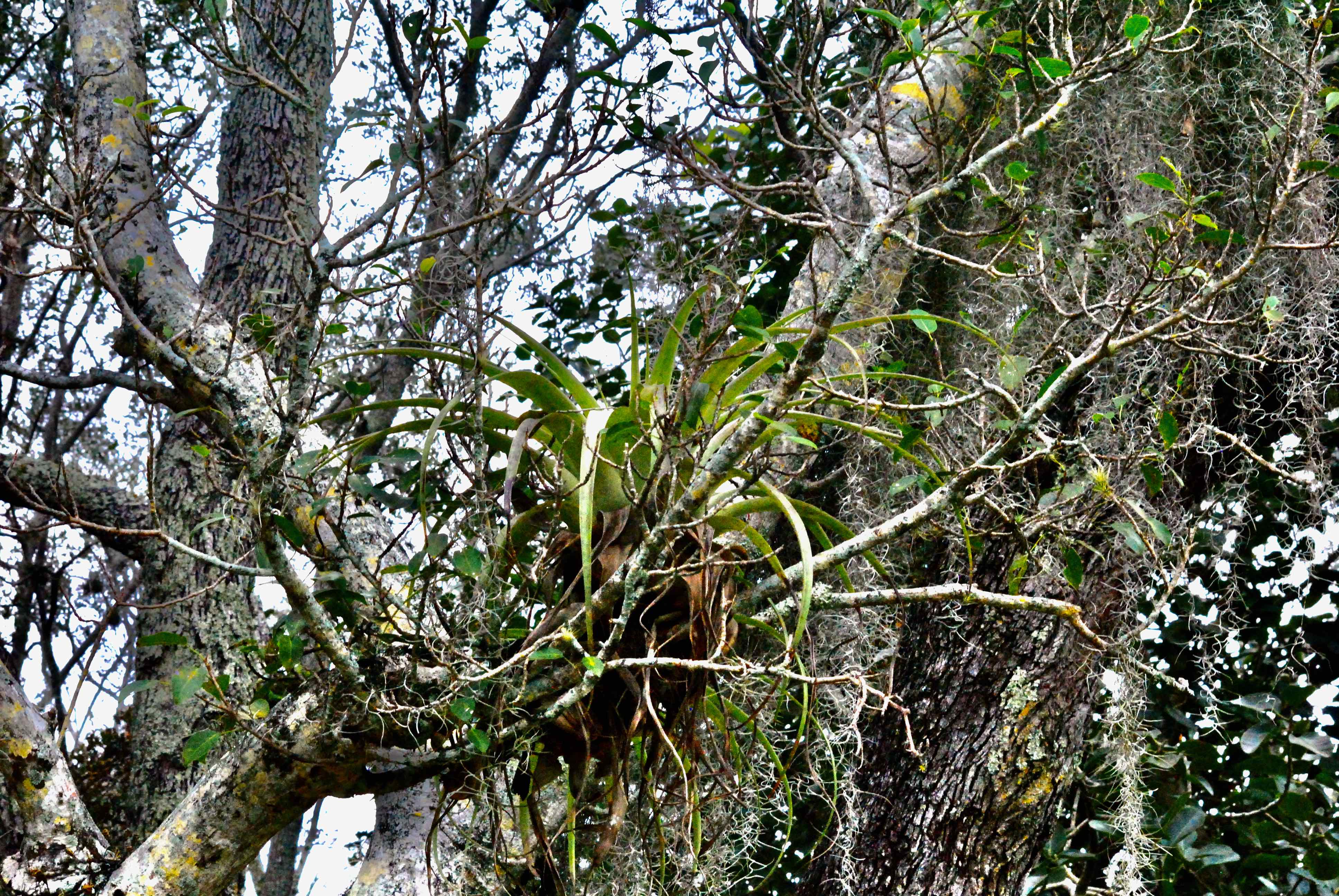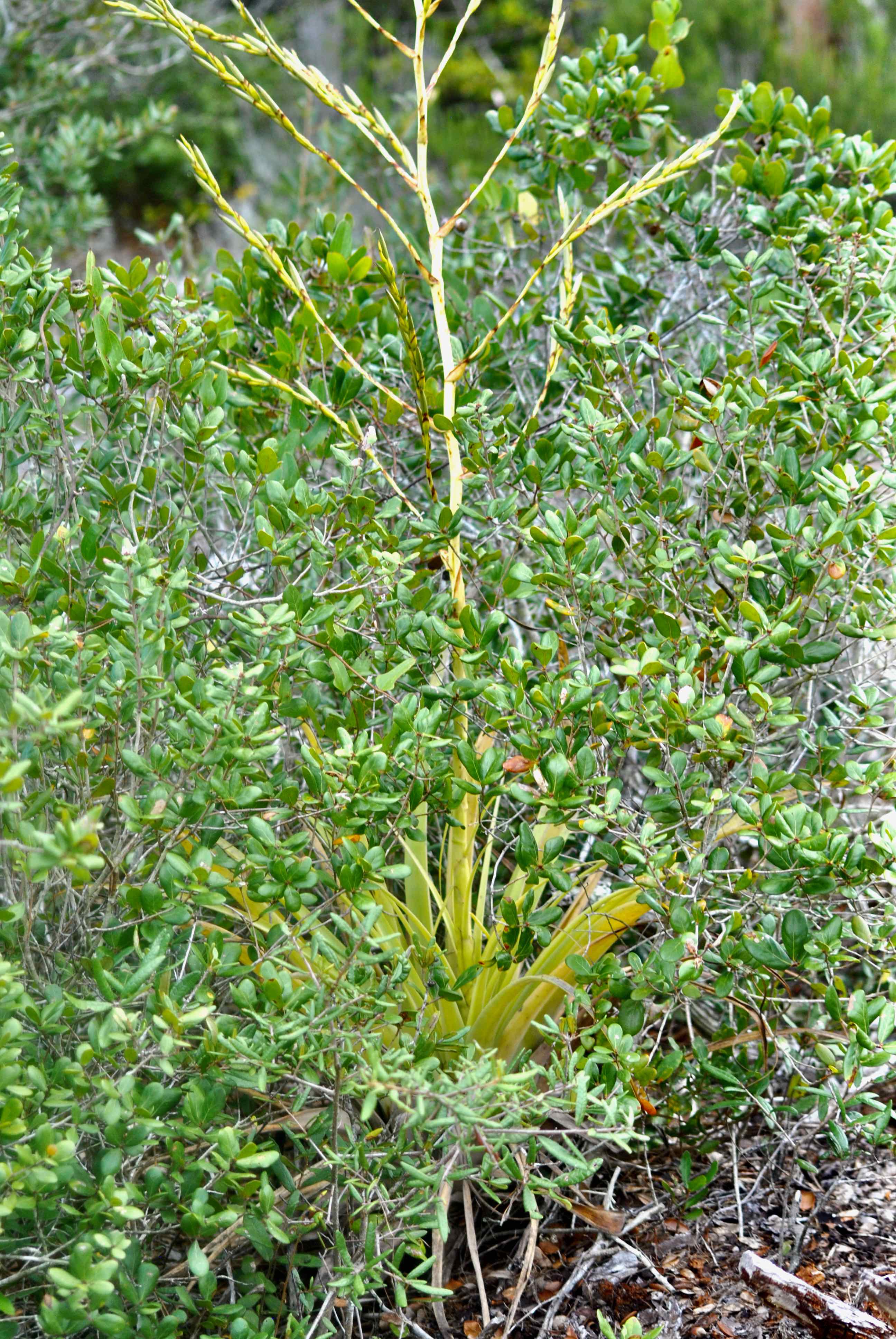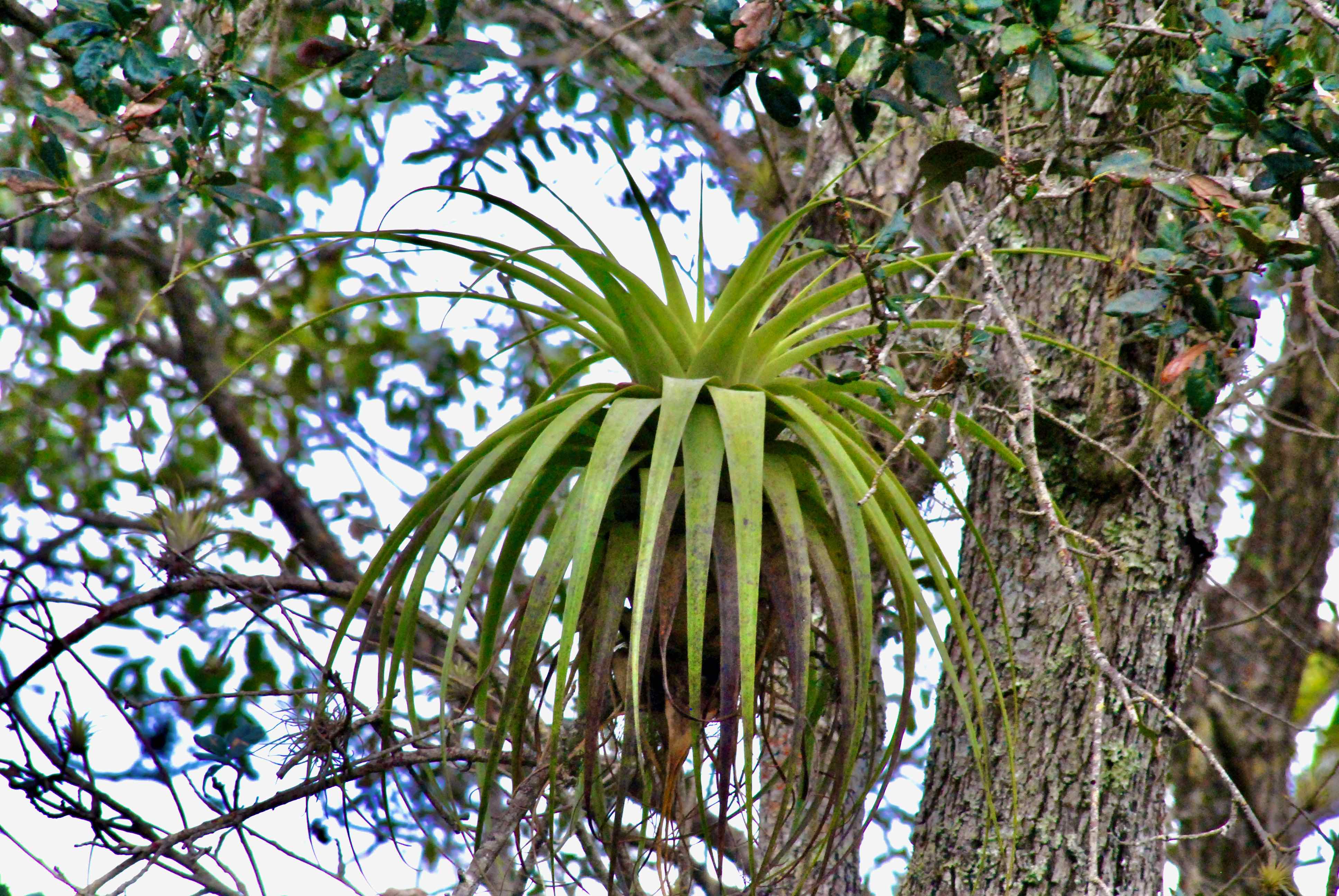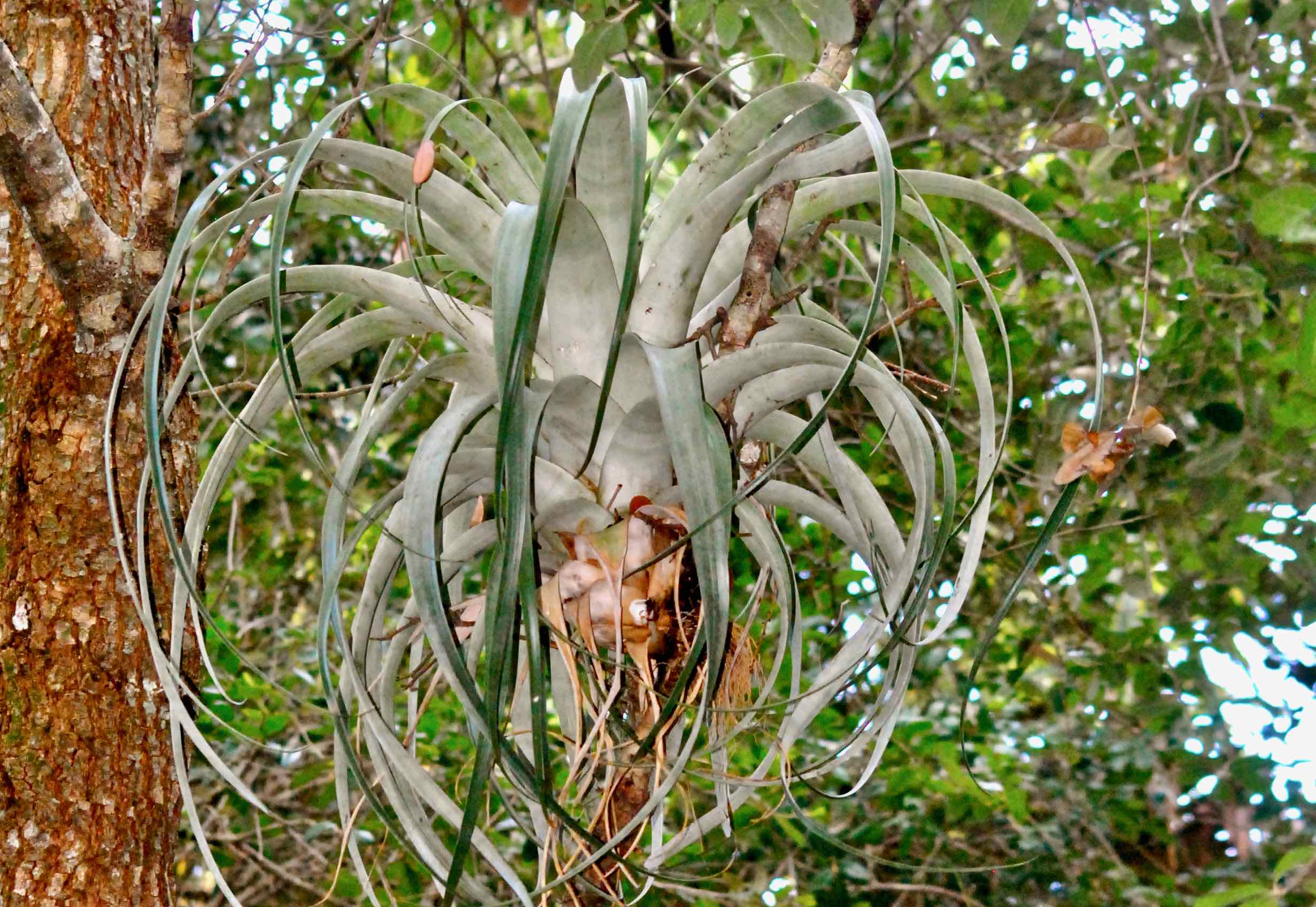
Giant Airplant, photographed at Green Cay Nature Center, Boynton Beach, Palm Beach County, in July 2014.
Giant airplant indeed. The species known to scientists as Tillandsia utriculata can be absolutely huge, bigger by far than any other bromeliad native to Florida. The giant can be three feet tall and resemble the top of a humongous pineapple; when it blooms, it can be twice that, or more.
Its native range extends over most of Florida's peninsula as far north as Putnam County southward through the Keys. It's also found in parts of Georgia, parts of the Caribbean, including Puerto Rico, Mexico, Central America and Venezuela.
It is what's known as a tank epiphyte. It will grow on a host tree, using the tree only for structure. The pockets where the leaves meet the base of the plant collect water and all kinds of detritis — dirt, bugs, decaying vegetative material — which bacteria break down into a kind of "soup." These tanks have special cells that absorb the water and whatever nutrients the plant needs to survive. Some people think epiphytes are parasites that harm the host but that's not the case at all. Giant airplants also can grow on the ground in leave litter.
Florida officially lists giant airplant as endangered, but the Institute for Regional Conservation in Delray Beach considers the South Florida population as secure, probably because of its widespread occurence; the IRC lists it as present in 133 parks and preserves throughout the region.
There are 16 bromeliad species native to Florida, 10 of which are either state-listed as threatened or endangered. The existential threats are the pretty much the same for each: loss of habitat, poaching and the presence of the deadly Mexican bromeliad weevil. There are no effective methods of controlling the evil weevil, and the giant airplant is especially vulnverable to it. According to the University of Florida, there were once large, dense colonies of giant airplant, but not now.
The larvae of the weevil literally eat the plant to death from the inside of the leaves. Females cut a slit in the leaves and lay a single egg inside each. The weevil larvae then begin eating their way to the base of the leaf. The good news is that there is a population of giant airplants in Central America and Mexico that can withstand the bug's munching ways, and scientists are studying them to figure out why. The bad news is it likely will take some time to discover their secret and come with a way to apply it to Florida's giant airplant population.
As we noted above, giant airplant resembles the top of a humongous pineapple. The leaves are curved upward and out, thick at the base and tapering to a pointed tip. They are generally green but can be a grayish green, and two feet long on a mature plant. Its lifespan can be 20 years. But giant airplant is a monocarp, meaning it will flower only once in its lifetime. It will send up a single, multi-branched stalk, which might have as few as 10 or as many 200 multi-hued flowers. Once the flowers set seed, the plant dies. Spring into fall is bloom time, with summer being the peak season.
Other common names include giant wild pine, spreading airplant and swollen wild pine. It is a member of Bromeliaceae, the bromeliad family, which includes pineapples and Spanish moss. One note: the U.S. Department of Agriculture uses giant airplant as the common name for a subspecies of the cardinal airplant, Tillandsia fasciculata var. Clavispica. Instead, they call our guy spreading airplant.
Click on photo for larger image
U.S. Department of Agriculture Distribution Maps
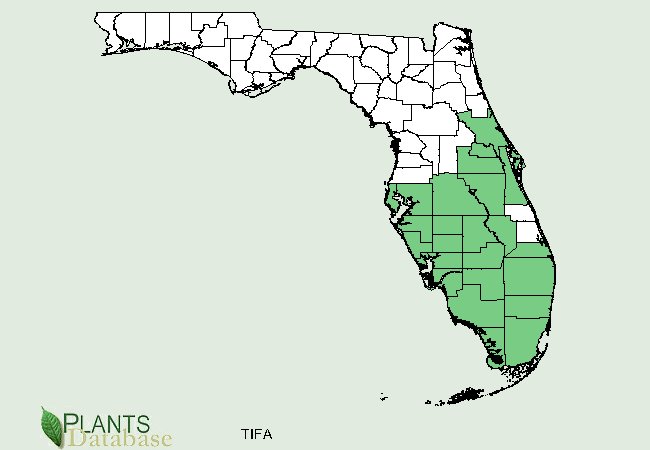

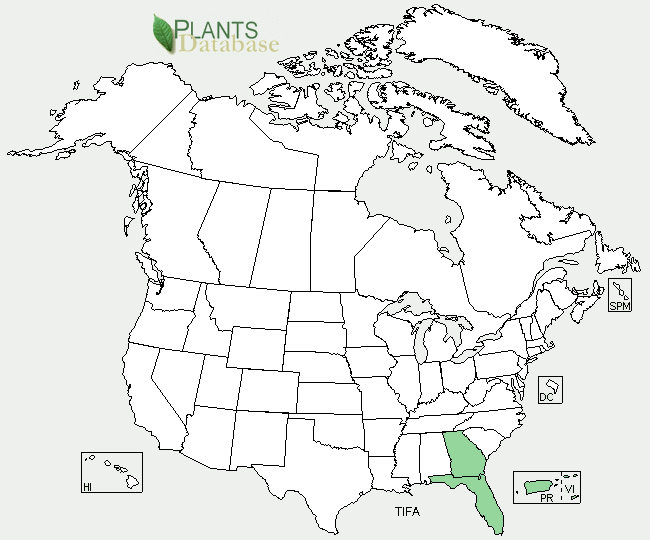
Links for Giant Airplant

